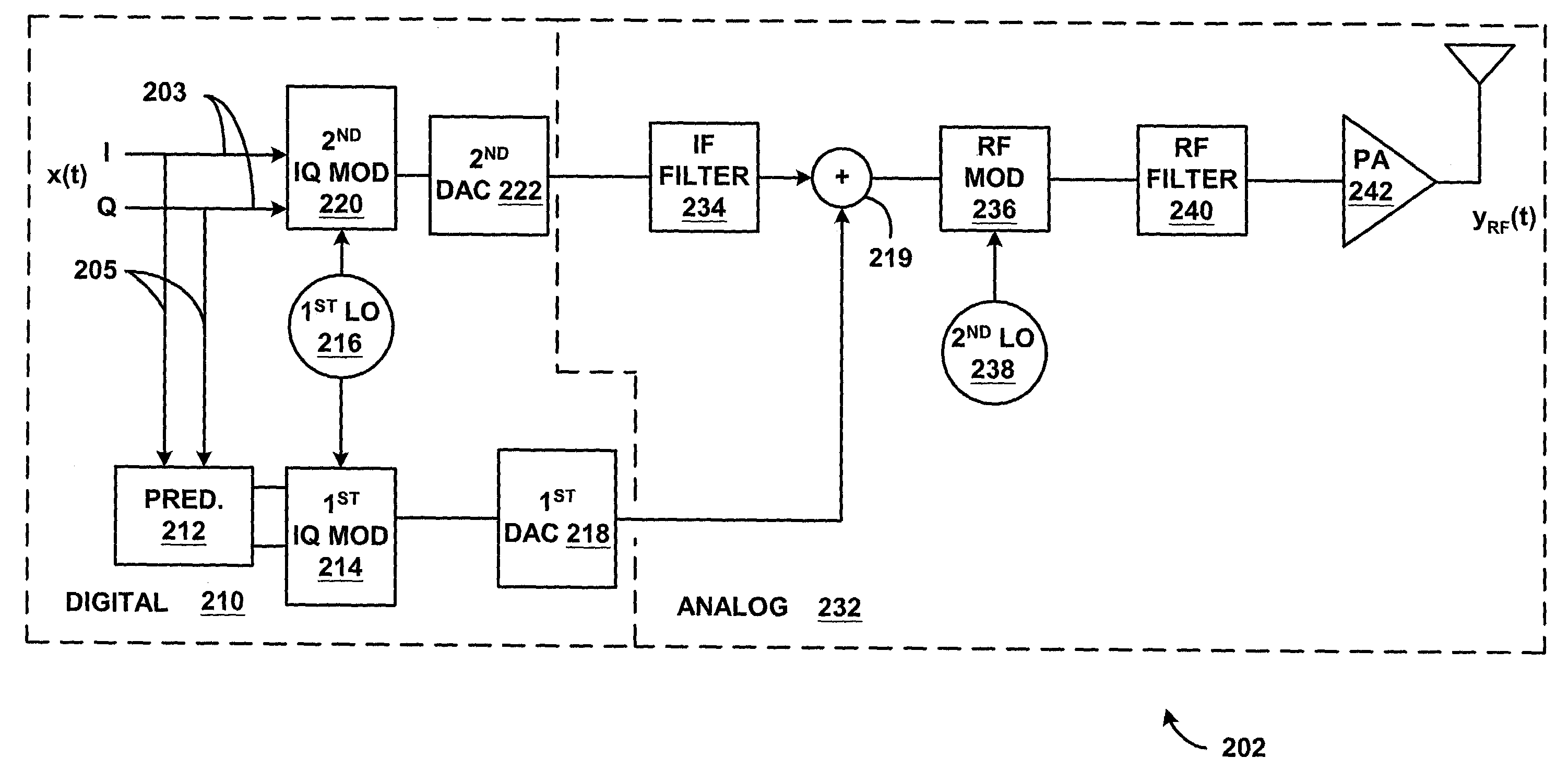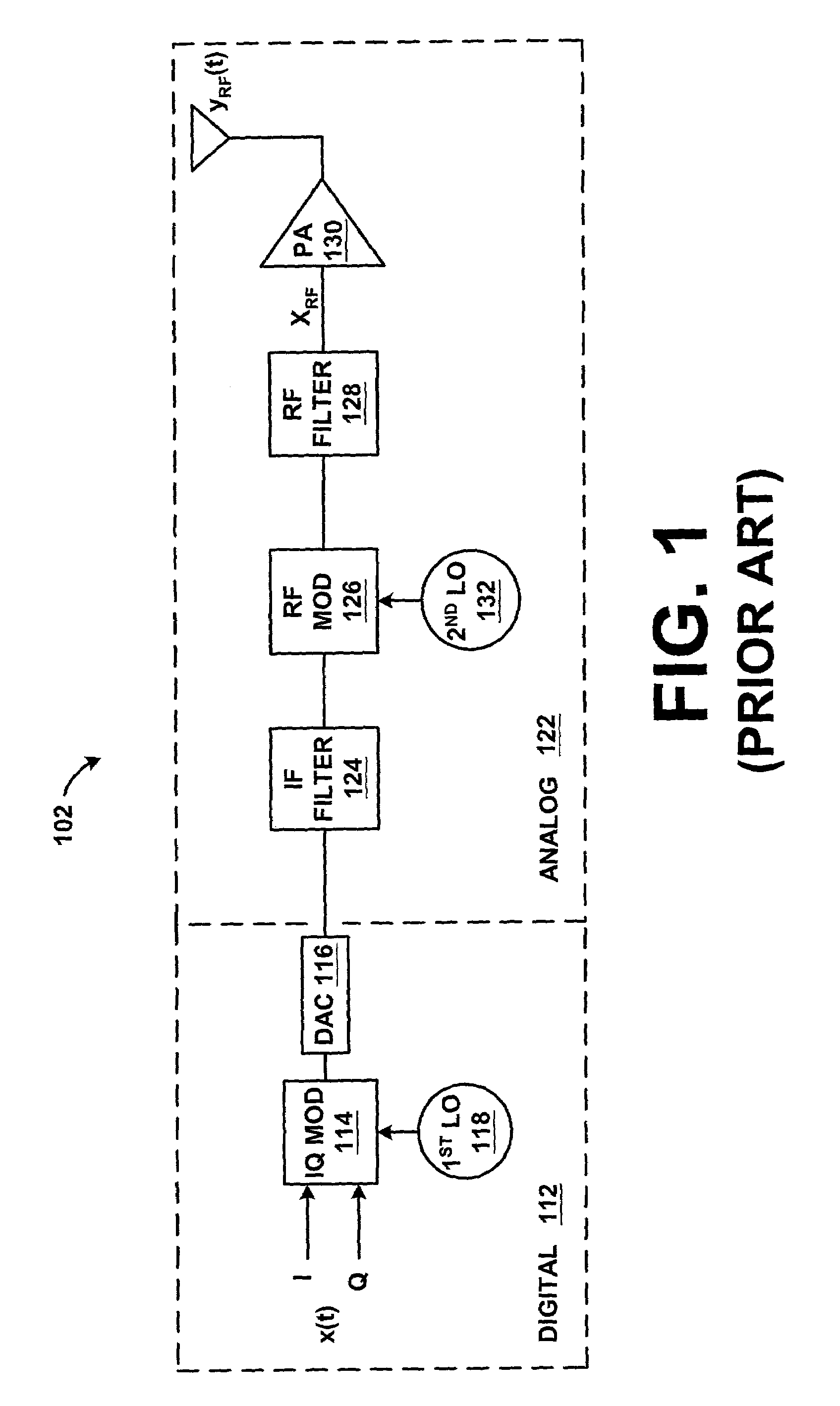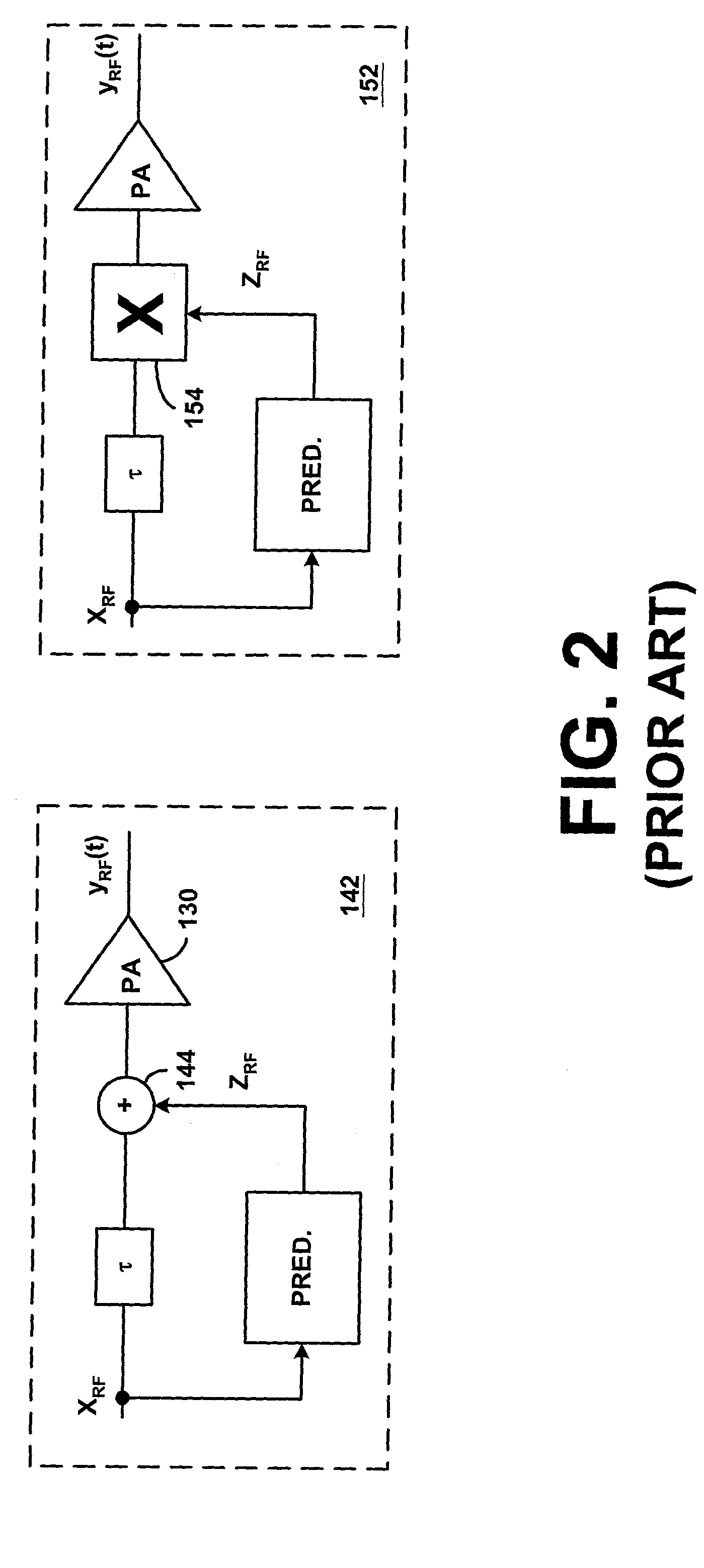Systems and methods for providing baseband-derived predistortion to increase efficiency of transmitters
a technology of predistortion and baseband, applied in the field of telecommunications, can solve the problems of transmitters generating frequency components that corrupt adjacent channels, leakage of transmission power of signals having amplitude modulation components, etc., and achieve the effect of increasing the efficiency of transmitters and greater increases in transmitter efficiency
- Summary
- Abstract
- Description
- Claims
- Application Information
AI Technical Summary
Benefits of technology
Problems solved by technology
Method used
Image
Examples
exemplary embodiment 202
[0037]FIG. 3 is a block diagram showing a first exemplary embodiment 202 of a transmitter according to the invention. The transmitter 202 digitally derives a digital predistortion signal from the digital input signal x(t) and combines an analog predistortion IF signal generated from the digital predistortion signal with an analog main IF signal to generate a combination signal that is fed to a power amplifier. The combination is performed after an IF filter that removes unwanted signals from the main IF signal but limits the bandwidth of the main IF signal. The main IF signal is a signal linearly derived from the digital input signal x(t). It should be noted that while the following describes use of a digital input signal, it should be noted that an analog input signal may be utilized in accordance with an alternative embodiment of the invention.
[0038]The digital predistortion signal has a higher sampling frequency than the digital input signal x(t) to enable the digital predistorti...
exemplary embodiment 352
[0062]FIG. 5 is a block diagram showing a second exemplary embodiment 352 of a transmitter according to the invention. The transmitter 352 includes analog baseband filters. The transmitter 352 derives a digital predistortion signal from the in-phase and quadrature components, respectively, of the digital input signal x(t), generates analog predistortion signals from the digital predistortion signal and combines the analog predistortion signals with the analog main signals after the baseband filters. In this embodiment, the analog main signals and the analog predistortion signals are baseband signals. The predistortion signal includes out-of-band frequency components that are added to the main analog signals after the baseband filters to prevent the baseband filters from removing the out-of-band frequency components of the analog predistortion signals. The analog predistortion signals effectively cancel the out-of-band frequency components resulting from the non-linearity of the powe...
PUM
 Login to View More
Login to View More Abstract
Description
Claims
Application Information
 Login to View More
Login to View More - R&D
- Intellectual Property
- Life Sciences
- Materials
- Tech Scout
- Unparalleled Data Quality
- Higher Quality Content
- 60% Fewer Hallucinations
Browse by: Latest US Patents, China's latest patents, Technical Efficacy Thesaurus, Application Domain, Technology Topic, Popular Technical Reports.
© 2025 PatSnap. All rights reserved.Legal|Privacy policy|Modern Slavery Act Transparency Statement|Sitemap|About US| Contact US: help@patsnap.com



